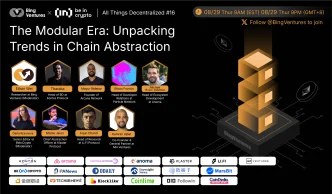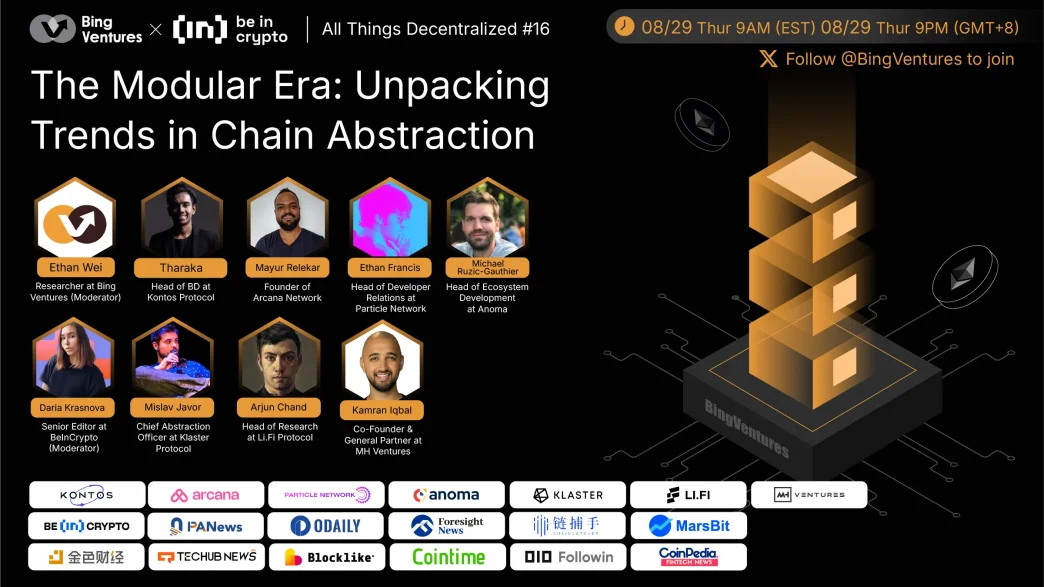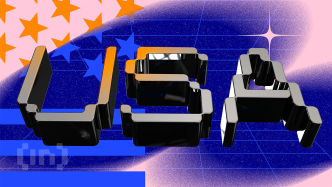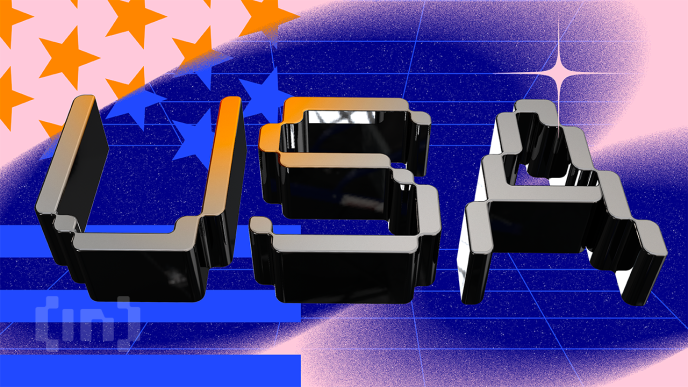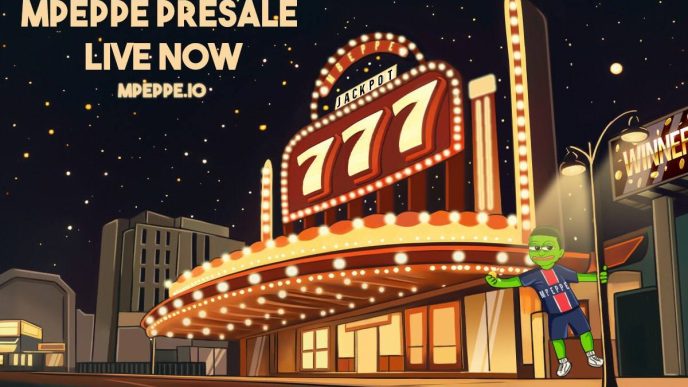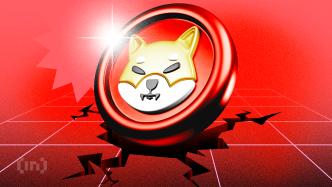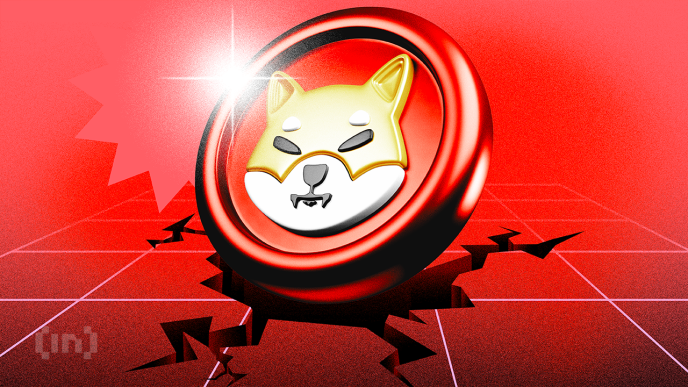Bing Ventures hosted the 16th episode of “All Things Decentralized,” focusing on the emerging trends in chain abstraction and modular blockchains.
The session, moderated by Ethan Wei, a researcher at Bing Ventures, brought together a panel of industry professionals, including:
- Tharaka, Head of Business Developvment at Kontos Protocol
- Mayur Relekar, Founder of Arcana Network
- Ethan Francis, Head of Developer Relations at Particle Network
- Mislav Javor, Chief Abstraction Officer at Klaster Protocol
- Arjun Chand, Head of Research at LI.FI Protocol
- Kamran Iqbal, Co-Founder and General Partner at MH Ventures
The discussion provided valuable insights into how modularity and chain abstraction are influencing the blockchain landscape and what the future may hold for these technologies.
Modularity in Blockchain: Evolving the Infrastructure
The blockchain industry is currently transitioning towards modular systems, which are becoming increasingly recognized as an effective method for scaling networks. Modularity allows blockchain networks to be divided into distinct components, such as execution, data availability, and consensus layers.
This separation can lead to more efficient and adaptable network architectures. However, it also brings new challenges, especially in terms of security. As Tharaka from Kontos Protocol notes, “Security vulnerabilities can arise because flaws in any single layer might compromise the entire network.”
Addressing Liquidity Fragmentation Through Chain Abstraction
Chain abstraction is another significant development within the modular blockchain ecosystem. It aims to streamline user interactions across various chains by unifying user balances, thereby simplifying transactions. This is particularly important for addressing liquidity fragmentation, a recurring issue in multi-chain environments.
Mayur Relekar of Arcana Network highlights this point, stating, “Chain abstraction unifies user balances across multiple chains, allowing for seamless spending of assets with one click, which is essential for solving liquidity fragmentation.”
This development not only enhances the user experience but also improves the efficiency of decentralized finance (DeFi) systems by reducing the complexity involved in managing assets across different blockchains.
Overcoming Challenges in Interoperability
Despite the advantages offered by modularity and chain abstraction, challenges remain, particularly regarding interoperability. As the blockchain industry continues to expand, the ability of different chains to communicate and interact smoothly is becoming increasingly critical.
Tharaka underscores this issue, saying, “Interoperability remains a significant hurdle as modular blockchains work towards cross-chain compatibility.” Without strong interoperability solutions, the full potential of modular systems may not be realized, as users and developers could still face obstacles when moving assets or executing transactions across different networks.
The Future of Blockchain: Enhancing User Experience Through Chain Abstraction
Improving user experience is a key goal for the future of blockchain technology, and chain abstraction plays a crucial role in this effort. By simplifying interactions and reducing the cognitive load on users, chain abstraction can make blockchain technology more accessible and easier to use.
Ethan Francis from Particle Network explains, “Our goal with chain abstraction at the account level is to allow users to manage a single balance across all chains, removing the need for complex bridging or understanding where their funds are.” This approach has the potential to significantly transform how users interact with blockchain applications, making the technology more intuitive and user-friendly.
Conclusion: Navigating the Future of Modular Blockchains
The shift towards modular blockchains and chain abstraction represents an important development for the blockchain industry. While these innovations offer solutions to critical challenges like scalability and liquidity, they also require careful consideration of associated risks, particularly in security and interoperability.
As the industry continues to evolve and integrate these technologies, the focus will remain on creating a seamless, secure, and efficient multi-chain ecosystem. The ongoing progress in this area suggests that modularity and chain abstraction will play a central role in the future of blockchain, driving further growth and adoption in the Web3 space.
Disclaimer
In compliance with the Trust Project guidelines, this guest expert article presents the author’s perspective and may not necessarily reflect the views of BeInCrypto. BeInCrypto remains committed to transparent reporting and upholding the highest standards of journalism. Readers are advised to verify information independently and consult with a professional before making decisions based on this content. Please note that our Terms and Conditions, Privacy Policy, and Disclaimers have been updated.
Source link
Advertorial
https://beincrypto.com/the-modular-era-unpacking-trends-in-chain-abstraction/
2024-09-02 09:30:00

